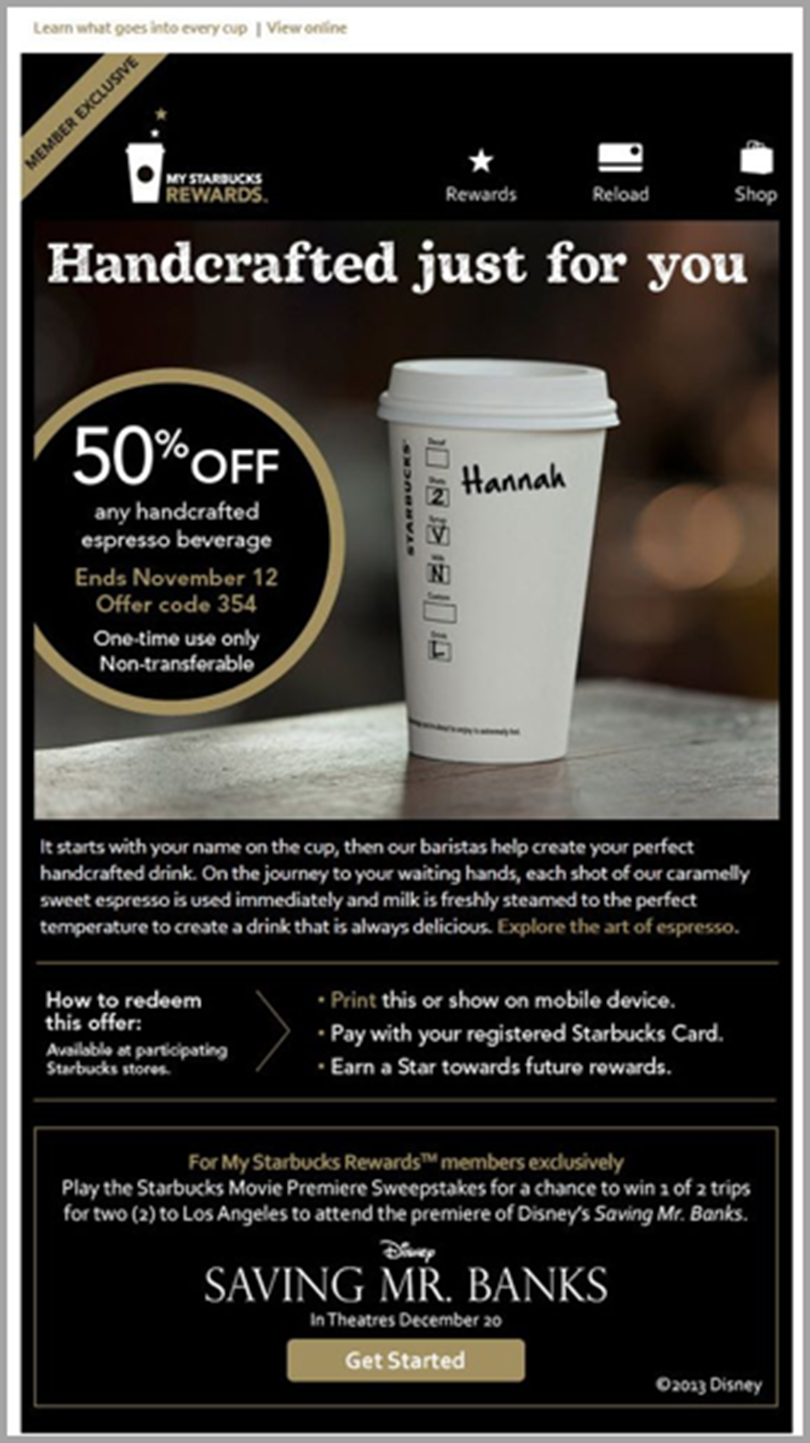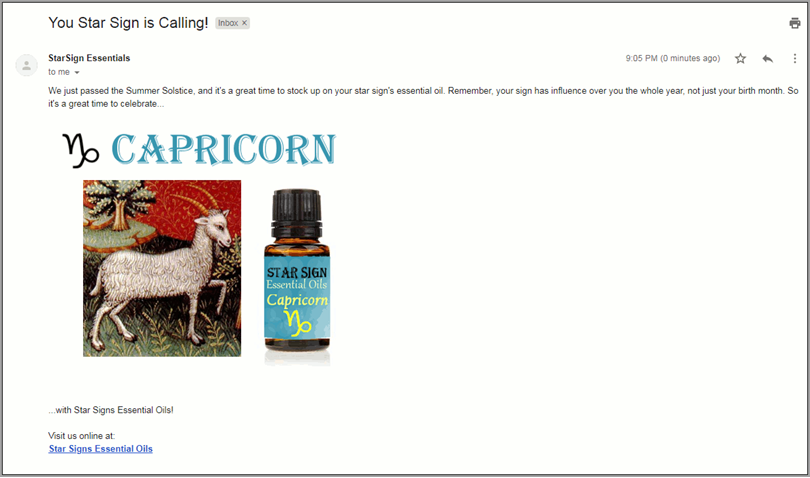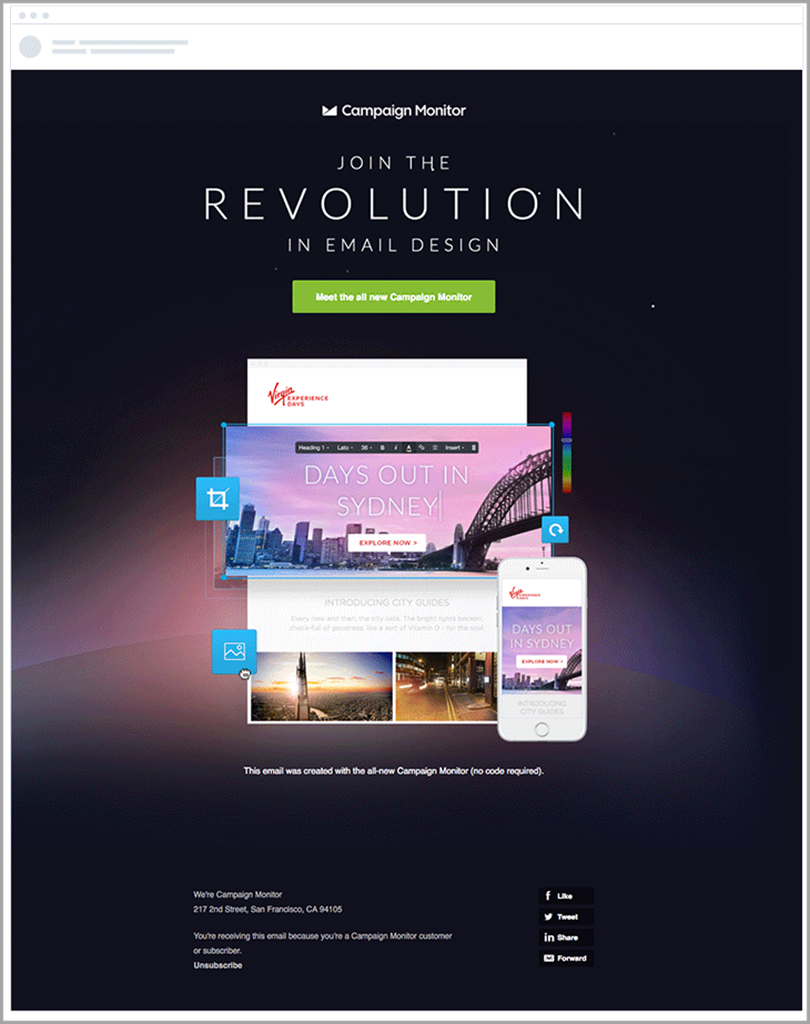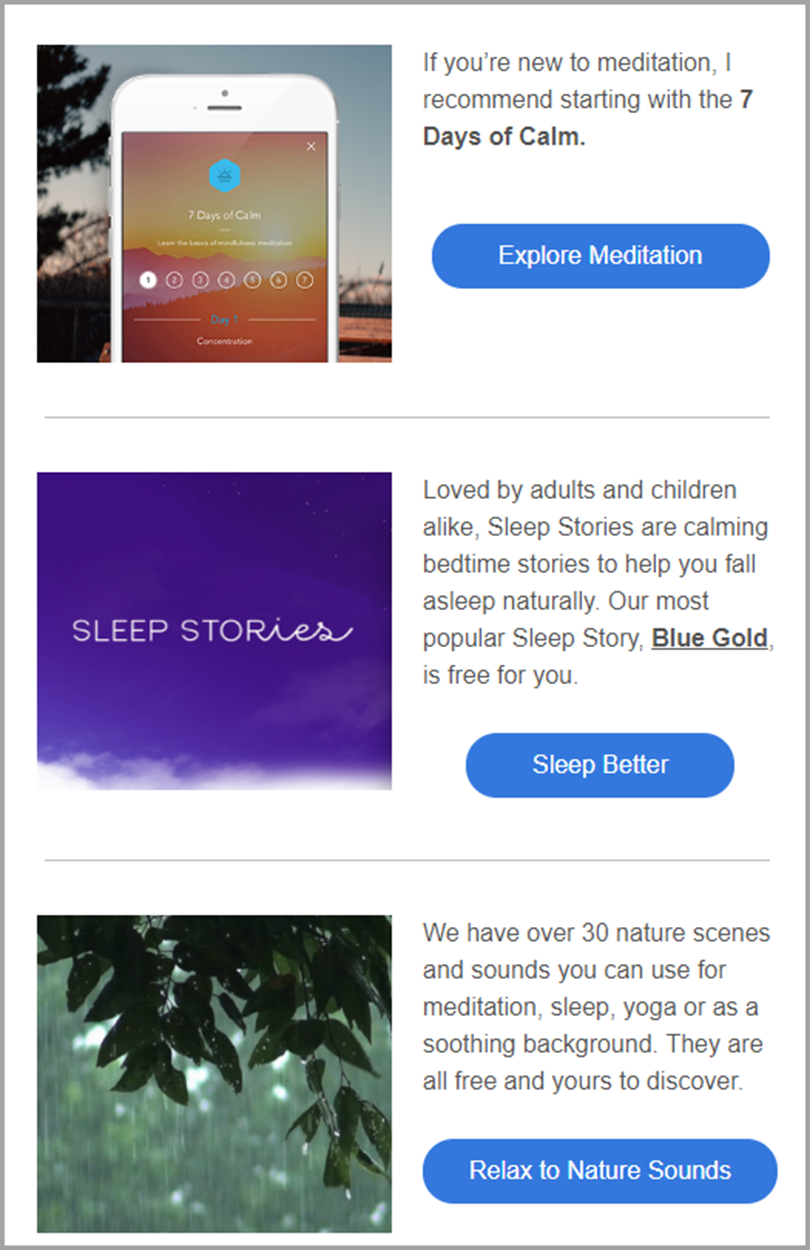
The average American receives 121 emails per day and sends another 40.
But that isn’t including promotional emails that clog up their inboxes and make them want to pull their hair out.
Standing out amongst your competition is becoming more than a challenge with saturation and a fatigued audience.
What triumphed as new “growth hacks” for email a few years ago is standard practice today (if they’re still around at all).
But new waves and forms of personalization and segmentation are reshaping the landscape of email marketing as we know it.
And I’m not talking about “Hello Fname,” either. That’s not real personalization.
Here is why personalization and segmentation are email marketing’s saving grace.
Real personalization is reviving email marketing
If you continually browse your inbox, you have probably noticed a dramatic shift in email marketing trends over the past few years.
Emails are becoming better than ever before and used for more purposes than ever before. Anything from promotions to content delivery and building real relationships.
Now that’s not to say that bad emails don’t exist, because they surely do.
But, as a collective, email marketing has improved and results are improving with it.
Just recently, one entrepreneur was able to scale their business from nothing to a booming startup solely using personalized email outreach. Key email marketing metrics like open rate, click-through-rate, and response rate are all climbing with the increase in personalization as a priority.
According to Campaign Monitor, marketers are noticing a 760% increase in revenue by segmenting traffic. The DMA found that segmented and personalized email campaigns generate 58% of all business revenue.
If anyone says that email is dying, they are simply wrong.
Data proves it.
In fact, email marketing is arguably stronger than ever, but it requires different tactics and a much greater focus on personalization beyond first and last name targeting.
According to Marketing Dive’s latest study, “Personalized email subject lines increase open rates by 50%.”
On top of that, segmentation alone can result in increases in virtually every and any email marketing KPI.
So, how are these directly related to the landscape of email marketing?
With success in the tactic comes more of that tactic.
We are starting to notice new ways that personalization takes effect in email. For example…
Visual personalization is The Holy Grail now
Just a few years ago, if you had asked any given email marketer about personalizing their efforts, they probably would have mentioned something along the lines of:
- Be sure to include their first name and last name where appropriate.
- Make sure that you address their name in the subject line.
- Make a personal connection to their needs.
While those tips and tricks were all great strides a few years ago, they are just commonplace, best practices in today’s modern era.
Can you imagine receiving an email with none of the above?
What would it even look like?
But as consumer behavior and demand changes, so does marketing.
Now, text-based personalization is too easy. It’s boring and commonplace, meaning it isn’t going to help increase success on key metrics.
The new holy grail of personalization is image and visual-based.
Why?
People are tired of text-focused emails:
According to Constant Contact, “Shorter emails get better opens rates; your contacts are much more likely to open your email when they trust that your email gets right to the point and your content is meaningful to them.”
Meaningful content that needs to be short is a match made in heaven for visuals.
The question only becomes how you can automate the process at scale.
In a new campaign, Starbucks’ Rewards program has been testing detailed visual personalization:

In this case, Hannah was the club member and recipient of the email.
Scaling this practice is not as hard as it would seem either. Scaling the image to mention every one of your customer’s individual names is difficult, but your images don’t have to copy Starbucks.
For instance, using Gmass and spreadsheets, you can quickly personalize images at scale. Want to personalize images based on the birthdays/star signs of your customers? Not a problem:

Simply source image links for their star sign and load them into a spreadsheet. When used on Gmail, the final email will look like this:

Now that’s personalization!
Visual personalization can come in very diverse formats. But doing it at scale can pay off big time in your campaigns.
Hey FNAME is easy. It’s standard stuff. But including someone’s name in the image and visual component or customizing it to their personality where their eyes are first drawn is next level.
Personalization is literally changing the way we do emails to focus less on the text as the selling point and more on creating visually focused emails that captivate attention and make recipients feel special connections to your brand.
Start brainstorming ways that you can include more personalization in your email images and focus less on the text.
Location-based email targeting is winning
More and more consumers want location-based personalization.
These are simply marketing messages that revolve around physical locations.
For instance, getting messages from a business nearby that they have discounts on a product that you had been looking for.
Or email coupons from Starbucks incentivizing you to visit your nearest store for a free drink.
Segmentation is paving the way for more engaging email marketing.
Just recently, Campaign Monitor worked with Virgin to create new, personalized and segmented email campaigns based on user locations. Utilizing beautiful images of each city referenced to user groups, they personalized both the copy and the image:

Targeting user locations based on their segmented list, they were able to increase their click-through rate by 29% as compared to traditional campaigns.
Impressed yet?
This impressive, highly tailored segmentation is becoming more popular and vastly changing the landscape of email marketing.
Enough are the days of generic coupon code discounts.
Now, we can get customized emails to our specific location. But not only that, our location is now tied with our interests for deeper, more personalized messages, like this one from Tripadvisor:

Just recently I was browsing flights from Salt Lake City to multiple destinations around the United States and the world.
Days later I got this email from Tripadvisor with customized offers from Salt Lake City.
That’s an email worth opening.
Not only is it visual and location personalized, but it also taps into funnel stage targeting as an added bonus.
My browsing history and steps to purchase were almost completed, signaling that I was far down in the funnel.
To take advantage of this, Tripadvisor sent a more salesy email.
Always take into account funnel stage to avoid customer frustrations of irrelevant or promotional emails if they aren’t ready.
Use their past purchase and browsing history to cross and upsell.
People want (and are getting) custom and valuable content – not generic discounts
Ever since the Gmail inbox switched it up and gave us tabs to manage our emails in distinct folder inboxes, promotional emails have had to fight for success.
You know, these tabs that you rarely click on unless you want to pound your head into your desk for the next hour trying to clear them:

Even though some of the offers you get in the promotions tab are stellar, like 25% discounts, they still don’t convert at high rates.
In fact, 59% will never open them, ever. Even after they subscribe.
Why is that? I mean, the offer is great, right? What’s wrong with it? Why aren’t people receptive to it anymore?
It’s too generic. High discounts are compelling, but they don’t scream personalization and they don’t give the user a chance to visualize what that discount could be put towards.
People browse dozens (if not hundreds) of different websites every single week.
The odds that they remember their specific browsing history on your own site are slim to none.
This means you have to refresh their memory with personalized tidbits of their experience.
Did they click on a lead magnet and spend ten minutes on site? What was it about?
Did they look specifically in the fall section of your women’s clothing line? Show them examples.
A great example of custom content is from Calm, a mindfulness, and meditation-focused mobile app.
When creating an account on Calm, they begin to track different aspects of the app that you most frequently engage with. The content that appeals to you.
And instead of blasting out mass emails to drive people back to their app with generic text, they personalize every piece of content in your email based on your browsing history:
Personalization and segmentation are making emails useful to consumers again.
Emails have long been perceived as annoying, spam, and too promotional.
But when you add personalization to the mix and genuinely help users engage with your brand, you drive meaningful user experiences.
Calm has free sections, but most of the real content is paid on the app. Not once did their emails campaigns push a discount, but rather, focused on getting you to use their services and enjoy them.
Similarly, the mobile app Pocket is great at providing personalized, custom content to their users.

Depending on your behavior and content preferences, Pocket curates some of the most popular posts in your space to eliminate a painful step in the process:
Finding these posts and curating them on your own.
By adding personalized value and simplifying the process, the email genuinely becomes useful for the customer.
In your email marketing, focus on delivering value and custom content or discounts. Don’t focus on being overly salesy or spammy.
Automation makes segmenting users and personalizing content easy
While all of these new branches of segmentation and personalization in email marketing sound fantastic, scaling them is tough.
Especially if you cater to multiple target markets, or multiple products and services.
Email lists can get big, but scaling goes hand and hand with segmentation and whittling your lists down to focus on specific niches.
And they aren’t that difficult if you are using advanced email marketing automation.
For instance, if you connect Zapier to your email client, you can automate some heavy duty personalization and segmentation, like sending varied emails based on specific survey responses:

Then you can connect promoted content campaigns with your latest Facebook leads ad campaign, retargeting views to nurture them down the funnel and provide personalized messaging based on the offer or content piece they found interesting.

Plus, doing so is easy. Depending on which lead ad a Facebook user clicks on, you can differ the content they engage with.
Depending on what actions they took, you can segment your list even further.
For example, breaking your list into three segments:
- People who clicked on the ad but didn’t engage.
- People who browsed the page and offer.
- People who converted.
Next, you can send separate emails containing a fresh, less intimidating offer for group one, another piece of relatable content for number two, and an appreciation or cross-sell email for number three.
Personalization and segmentation open the doors for better email marketing, especially when it comes to automation.
While automating some high-level things at scale isn’t easy, when you start to segment your list to narrower markets, automation falls into place.
Conclusion
The average working American receives over 100 emails in their inbox for work alone. Daily.
Let alone sending over 40 more.
Email is a huge aspect of our daily lives, whether we love it or hate it.
Outside of work, most (but not all) promotional emails clutter our inboxes and drive us mad.
There is a fine, small percentage of businesses out there utilizing both personalization and segmentation to virtually change the landscape of email marketing.
And those that tap into these trends are finding better success metrics than ever before.
Don’t think of personalization as just first name targeting. It’s now deeper, focusing on location, custom offers, immersive visuals, and more.
The landscape of email marketing is shifting. Are you keeping up?
Guest author: David Zheng is the Founder of Growth Wit and Wisemerchant and the Head of Growth at BuildFire. He specializes in growth and content strategies to help influencers, ecommerce brands, venture-backed startups, and Fortune 500 companies grow their traffic and revenue online.
The post Why Personalization and Segmentation Are Email Marketing’s Saving Grace appeared first on Jeffbullas’s Blog.
Read Full Article: http://bathseoexpert.tumblr.com/post/180105800131
No comments:
Post a Comment